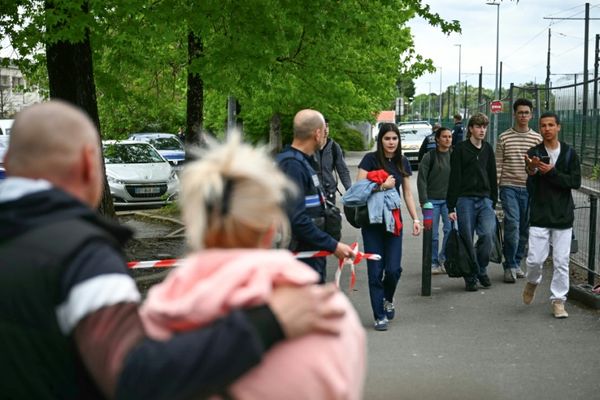
Followers of Elon Musk’s Twitter account will know that the world’s richest man is partial to attention-grabbing statements. Even so, it was notable when he told Twitter staff this month that bankruptcy at the company isn’t out of the question.
Twitter’s owner has admitted that the business has suffered a “massive drop in revenue” after campaign groups raised concerns about content moderation standards and warned the company’s remaining staff this month that it could lose billions of dollars next year.
Will the world’s richest man really let an influential social media platform go bust? At least not in the short term, experts say. But advertisers are Twitter’s main source of revenue – 90% of Twitter’s $5.1bn (£4.2bn) turnover last year – and his decisions over reinstating banned accounts risk alienating them further. On top of that, he needs money to service interest costs on the near $13bn of debt he took on to buy the business for $44bn.
Fears over hate speech have led to a number of advertisers pausing their spend on Twitter, including General Motors and Chipotle. Musk, a self-declared “free speech absolutist”, batted aside those concerns last Thursday when he announced a “general amnesty” for suspended accounts starting this week. Permanently banned accounts on the platform include Steve Bannon, a former adviser to Donald Trump, the rightwing British commentator Katie Hopkins and David Duke, the ex-Ku Klux Klan grand wizard.
“It currently looks worrying for advertisers, given the lifted bans might allow proliferation of undesirable content. The onus is now on Twitter to prove that advertisers will be safe when they return to the platform,” says Farhad Divecha, managing director of the UK digital marketing agency Accuracast.
The Center for Countering Digital Hate, a campaign group, said the amnesty would lead to the return of “super-spreaders of hate” and urged advertisers to quit the platform.
A botched revamp of Twitter’s subscription service, Twitter Blue, compounded the problem by giving users a “verified” blue tick for $7.99. It was a gift that some pranksters could not ignore, resulting in a flood of fake accounts purporting to represent Nintendo, the pharmaceutical firm Eli Lilly and the US politician Ted Cruz. Omnicom, a big advertising firm, cited the impersonation problem as one of the reasons why its clients should pause spending, along with executive departures and sackings within Twitter’s trust and safety team.
The uncertain income picture for Twitter – an advertising shortfall and problems over boosting subscription revenues – was compounded by a warning from the company’s former head of trust and safety, Yoel Roth, that Twitter’s presence on Apple and Google’s app stores is vital for the business. This month Roth raised the “catastrophic” prospect of Twitter breaching Apple and Google’s app store guidelines, risking its expulsion from their app stores and cutting off billions of potential users.
Roth’s warning appeared prescient on Monday, when Musk claimed that Apple had threatened to take Twitter off its app store. Days before, Musk responded to a Twitter user raising the prospect of Apple and Google booting Twitter from their app stores. He tweeted: “I certainly hope it does not come to that, but, yes, if there is no other choice, I will make an alternative phone.” It might be easier to keep within Apple’s instruction that apps must not produce content or behaviour that “we believe is over the line”.
On the other side of that revenue uncertainty is debt – a lot of it. Twitter’s debt burden looms over the company’s uncertain revenues. Musk raised nearly $13bn in debt from a consortium of Wall Street banks to help meet the $44bn purchase price. He put in more than $20bn of his own money, alongside $7.1bn from associates and around $4bn from his existing stake in Twitter. The banks made up the rest and that debt now sits on Twitter’s balance sheet.
Twitter’s interest expense will be roughly $1.2bn a year, says Jordan Chalfin, a senior analyst at the credit research firm CreditSights. He adds: “It’s imperative that Twitter increase revenues and expand margins so that it can grow into its capital structure.”
One proxy for Twitter’s ability to pay this interest is cashflow. In its last annual results as a listed business, Twitter generated negative free cashflow (spending more cash to run the business than it takes in) of $370.4m. In its last quarterly results, for the three months to 30 June 2022, the negative cashflow was $124m. In the same staff meeting in which he warned that bankruptcy was possible, he reportedly said the company might have a “net negative cashflow of several billion dollars” next year. This is why going bust is a possibility in Musk’s mind.
The stark reality of Twitter’s financial situation is offset by the fact that many people’s antihero in the story so far is more than capable of playing saviour. Musk is, after all, the world’s richest man. According to the Bloomberg billionaire’s index the Tesla chief executive is worth $180bn.
Much of that wealth is represented by Musk’s vast holding of shares in the electric carmaker. Calculations by Ben Silverman, director of research at VerityData, show Musk’s Tesla stock, including exercisable options, is wortht $124.7bn based on the 23 November share price of $183.20. However, this includes $49bn worth of shares pledged “to secure certain personal indebtedness”.
CreditSights’ Chalfin says he thinks it is unlikely that Twitter will go under in the short term. “A near-term bankruptcy is highly unlikely as there is implicit support from Musk who would protect his substantial equity investment.” Twitter also has cash of $2.7bn on its balance sheet to help meet interest payments.
“In the near term Twitter should have no issue meeting these obligations,” says Drew Pascarella, a senior lecturer on finance at Cornell University. “The company does have a large cash balance to draw from for this purpose.”
Musk has also taken brutal action on Twitter’s costs, which were $5.6bn last year. He fired half of the company’s 7,500 staff within days of taking over the company. A further 1,200 staff have left, according to the New York Times, in the wake of Musk’s ultimatum that the remaining staff commit to being “hardcore” or leave. Pascarella estimates the coast savings from the staff job cuts to be about $560m. Musk is also reportedly hoping to save $1bn a year from infrastructure costs such as data servers.
“In firing half of the employees, he appears focused on reducing cash expense such that the company itself can generate the cash to cover the interest expense,” Pascarellla says. “Of course, without sufficient revenue, there is no cash even if expenses get under control. Twitter’s revenue generation, from advertisers and potentially from subscribers, is a question mark at current.”
On Sunday Musk tweeted slides from a company presentation showing that daily user numbers at Twitter had risen from more than 237 million at the last official count to nearly 254 million. The immediate focus among advertisers and app store owners is not on growth of user numbers, but on a surge in content that crosses the line.
• This article was amended on 29 November 2022. An earlier version incorrectly gave Twitter’s negative free cashflow in its last annual results as $370.4bn rather than $370.4m.







